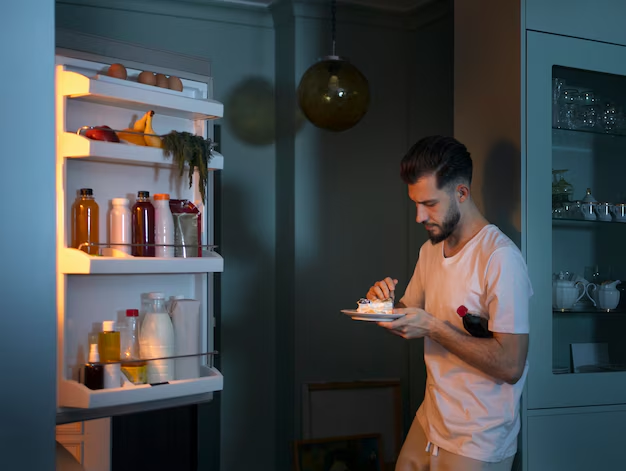Should You Store Wine in the Refrigerator? A Complete Guide to Optimal Wine Storage
When it comes to storing wine, there are many ideas and opinions floating around, but a common question tends to pop up: Should you put wine in the refrigerator? Whether you're a wine connoisseur or a casual sipper, understanding the nuances of proper wine storage can transform your wine-drinking experience. In this guide, we will explore the factors that influence whether you should chill your wine, the types of wines that benefit from refrigeration, and other refrigerator topics that can enhance your wine savviness. Let’s uncork the answers!
Why Wine Storage Matters
Preserving the Taste
Wine storage is crucial because the way you store wine can significantly affect its taste and quality. Wine is a delicate beverage that is sensitive to temperature, light, and humidity. Proper storage ensures the wine’s aromas, flavors, and structure are preserved until you’re ready to enjoy it.
Longevity of Your Bottles
Inappropriate storage can lead to a wine's premature aging or spoilage. Ensuring wine longevity involves maintaining the right temperature, minimizing exposure to light, and keeping the cork moist to prevent air from seeping in and oxidizing the wine.
The Role of Temperature in Wine Storage
Understanding Optimal Wine Temperatures
Different types of wine require different storage temperatures to maintain their intended taste profiles. Generally:
- Reds are best stored between 55°F to 65°F.
- Whites and Rosés perform well at 45°F to 50°F.
- Sparkling wines and Champagnes are best at a crisp 40°F to 50°F.
How Refrigeration Affects Wine
A standard household refrigerator is typically set between 35°F and 38°F—too cold for long-term wine storage. Over-refrigerating wine can dull flavors and aromas. However, short-term refrigeration might work for certain wines right before serving or for partial bottles to keep them fresh once opened.
Types of Wine Suitable for Refrigeration
Whites and Rosés: Your Go-To Chillers
White wines and rosés benefit most from short-term refrigeration. Their flavors become more pronounced and refreshing when chilled. For casual home storage, placing whites and rosés in the refrigerator for up to 24 hours before serving can enhance their taste.
Sparkling Wines: Crisp and Refreshing
Sparkling wines, like Champagne, thrive under chillier conditions. Storing them in the refrigerator for a few hours prior to serving not only brings out their freshness but also helps maintain their effervescence.
Reds: Handle With Care
While reds are traditionally served at room temperature, you can consider slight refrigeration—around 30 minutes before serving—for lighter-bodied reds. This approach enhances their brightness and fruitiness without compromising structure.
Factors to Consider Before Refrigerating Wine
Duration of Storage
For long-term storage, it’s best to keep wines in a dedicated wine fridge or cellar rather than a conventional fridge. Household refrigerators provide a cold and dry environment not meant for the nuanced aging process many wines require.
Impact of Consistent Temperature
Fluctuations in temperature can create havoc on wine quality. Maintaining a consistent storage temperature is vital. If refrigeration is needed, ensure that the wine is not subjected to repeated temperature changes.
Cork Moisture Retention
Keeping wine bottles on their side helps maintain cork moisture, preventing air ingress. While refrigerators aren't ideal for this practice due to space constraints, this becomes crucial if you're storing wine for more than a day.
The Importance of Serving Temperature
Getting the Temperature Just Right
Just as the storage temperature is important, so is the serving temperature. Here's a quick guide:
- Sparkling wines: 40°F to 50°F
- White wines and rosés: 45°F to 55°F
- Light reds: 55°F to 60°F
- Full-bodied reds: 60°F to 65°F
Practical Tips for Serving
For whites and rosés coming out of the fridge, consider letting them warm up for about 5-10 minutes to mellow out the flavors. Conversely, chill reds briefly for the same effect—especially if coming from a warm room.
Related Refrigerator Topics: Enhancing Your Wine Experience
Wine Coolers vs. Refrigerators
A wine cooler or wine fridge maintains optimal storage conditions, usually regulating temperature and humidity better than standard refrigerators. Investing in a wine cooler can be worthwhile for serious wine aficionados or those with a burgeoning collection.
- Wine cooler benefits: Precise temperature control, suitable for both short and long-term storage.
- Refrigerator constraints: Great for short-term cooling of whites and sparklings, not suitable for aging wines.
Dealing with Partial Bottles
After opening a bottle, refrigeration can be beneficial:
- Seal the Bottle: Use a wine stopper or vacuum sealer to limit oxidation.
- Store Upright: In the refrigerator, storing vertically minimizes the wine's exposure to air.
- Consume Promptly: For best taste, finish whites and reds within a few days; sparkling wines within one to two days.
Exploring Wine Storage Alternatives
If space and budget allow, consider alternative storage solutions:
- Wine racks: For short-term, accessible storage.
- Wine cabinets: With varied designs, they can fit your home decor and storage needs while often offering additional temperature control features.
Practical Takeaways 🍷
Here's a quick reference guide for your wine storage and refrigeration:
- 🥂 Whites & Rosés: Chill in the standard fridge for 1-2 days before serving.
- 🍾 Sparkling Wines: Keep crisply chilled in the refrigerator for special occasions.
- 🍇 Reds: Store at room temperature, chill lightly before serving if needed.
- ❄️ Avoid Long-Term in Fridge: Use dedicated wine storage solutions for months-long storage.
- 🗓️ Time It Right: Serve wines at their best temperature for optimal flavor.
By understanding these principles, you'll ensure that every bottle you open offers the best taste and experience possible. Whether you're storing your everyday favorite or a special vintage, the right care and attention to wine storage can elevate your enjoyment of this timeless beverage. Cheers to well-kept wines and delightful sips!
